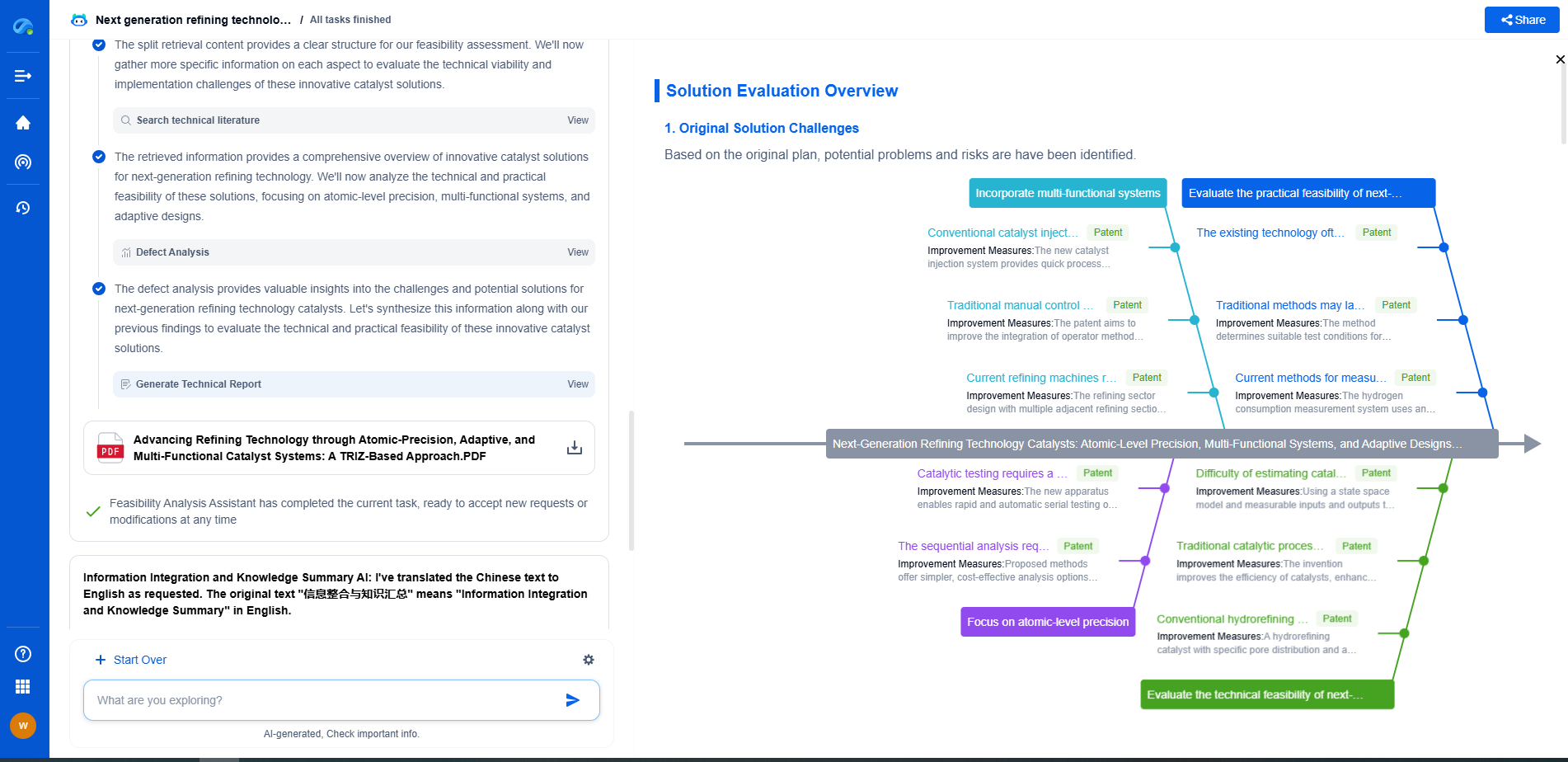Parallel vs angular grippers: Key differences explained
JUN 26, 2025 |
In the field of robotics and automation, grippers play a crucial role in facilitating the interaction between machines and their environments. These devices are integral to various applications, from assembly lines to packaging, by enabling machines to hold, manipulate, and release objects. Among the many types of grippers available, parallel grippers and angular grippers stand out due to their distinct operating principles and use cases. This article will delve into the key differences between parallel and angular grippers, shedding light on their unique characteristics and applications.
Design and Mechanism
Parallel Grippers
Parallel grippers operate by synchronously moving their fingers in parallel lines towards or away from each other. This movement allows them to grip objects with uniform pressure across parallel surfaces. The design typically involves two fingers that are actuated by a mechanism such as pneumatic, hydraulic, or electric drives. The simplicity of their design makes them highly reliable and easy to maintain.
One of the main advantages of parallel grippers is their ability to handle a wide range of object sizes and shapes. They are particularly effective for objects with flat, opposing surfaces, providing a stable and secure grip. This makes them a popular choice in applications that require precise positioning and consistent gripping force.
Angular Grippers
Angular grippers, on the other hand, have fingers that pivot around a central point, resembling the movement of a pair of scissors. This pivoting action allows the grippers to engage with an object from the side, making them ideal for tasks where space is limited or where objects need to be approached from an angle. The angular motion is often driven by pneumatic or hydraulic actuators.
These grippers are well-suited for tasks involving irregularly shaped objects or those that require a firmer grip. Their design allows for a greater range of motion compared to parallel grippers, making them versatile in handling various objects. However, the gripping force may vary across the contact points, which can be a consideration for delicate items.
Application Scenarios
Parallel Grippers in Action
Parallel grippers are widely used in scenarios that demand precision and repeatability. Industries such as electronics, pharmaceuticals, and automotive manufacturing often employ parallel grippers for tasks like circuit board handling, component assembly, and delicate product packaging. Their ability to exert a uniform grip on objects makes them indispensable in applications where maintaining the integrity of the object is critical.
Furthermore, parallel grippers can be customized with different finger designs and materials to accommodate specific tasks. For instance, adding soft pads to the fingers can enhance the grip on fragile items, reducing the risk of damage during handling.
Angular Grippers in Use
The versatility of angular grippers makes them ideal for applications that require adaptability in gripping various object shapes. They are commonly used in industries such as food processing, heavy machinery, and construction, where objects often have uneven surfaces or need to be handled at different angles.
Angular grippers are particularly beneficial in environments where space constraints exist or where objects are located close to other components. Their ability to approach and grip from the side can facilitate handling in tight spaces, providing a significant advantage over other types of grippers.
Choosing the Right Gripper
When it comes to selecting between parallel and angular grippers, the decision largely depends on the specific requirements of the task at hand. Key factors to consider include the shape and size of the objects being handled, the precision required, and the environmental conditions in which the gripper will operate.
For tasks that require precise alignment and consistent force distribution, parallel grippers are often the preferred choice. In contrast, for operations that involve irregularly shaped objects or need flexible gripping from different angles, angular grippers offer a more adaptable solution.
Conclusion
Both parallel and angular grippers have unique strengths that make them suitable for different applications in the world of automation and robotics. Understanding their distinct characteristics and operational mechanisms can aid in selecting the most appropriate gripper for a given task. By aligning the choice of gripper with the specific needs of the operation, businesses can enhance efficiency, precision, and safety in their automated processes.
Ready to Redefine Your Robotics R&D Workflow?
Whether you're designing next-generation robotic arms, optimizing manipulator kinematics, or mining patent data for innovation insights, Patsnap Eureka, our cutting-edge AI assistant, is built for R&D and IP professionals in high-tech industries, is built to accelerate every step of your journey.
No more getting buried in thousands of documents or wasting time on repetitive technical analysis. Our AI Agent helps R&D and IP teams in high-tech enterprises save hundreds of hours, reduce risk of oversight, and move from concept to prototype faster than ever before.
👉 Experience how AI can revolutionize your robotics innovation cycle. Explore Patsnap Eureka today and see the difference.
- R&D
- Intellectual Property
- Life Sciences
- Materials
- Tech Scout
- Unparalleled Data Quality
- Higher Quality Content
- 60% Fewer Hallucinations
Browse by: Latest US Patents, China's latest patents, Technical Efficacy Thesaurus, Application Domain, Technology Topic, Popular Technical Reports.
© 2025 PatSnap. All rights reserved.Legal|Privacy policy|Modern Slavery Act Transparency Statement|Sitemap|About US| Contact US: help@patsnap.com

